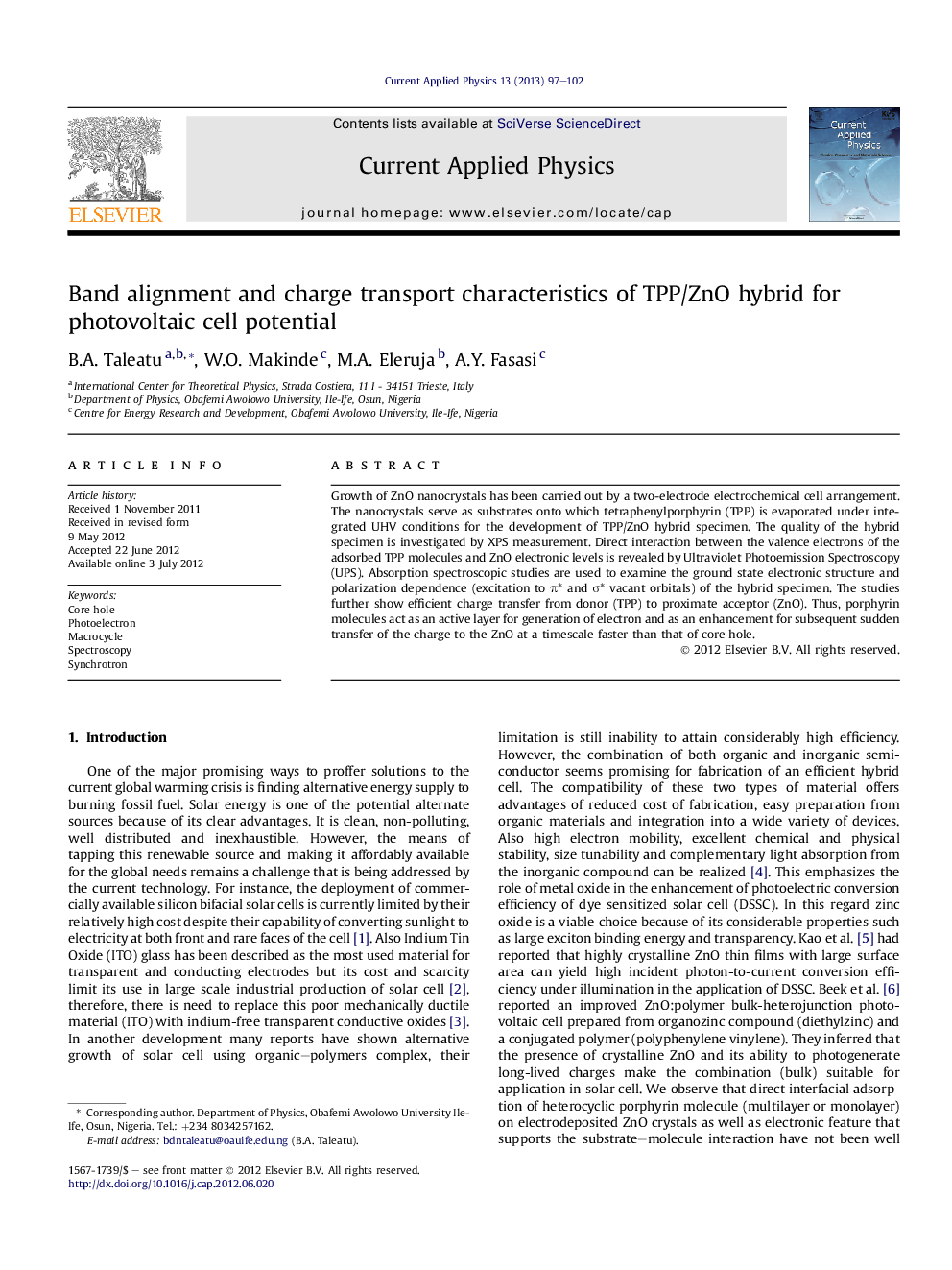| Article ID | Journal | Published Year | Pages | File Type |
|---|---|---|---|---|
| 1786128 | Current Applied Physics | 2013 | 6 Pages |
Growth of ZnO nanocrystals has been carried out by a two-electrode electrochemical cell arrangement. The nanocrystals serve as substrates onto which tetraphenylporphyrin (TPP) is evaporated under integrated UHV conditions for the development of TPP/ZnO hybrid specimen. The quality of the hybrid specimen is investigated by XPS measurement. Direct interaction between the valence electrons of the adsorbed TPP molecules and ZnO electronic levels is revealed by Ultraviolet Photoemission Spectroscopy (UPS). Absorption spectroscopic studies are used to examine the ground state electronic structure and polarization dependence (excitation to π* and σ* vacant orbitals) of the hybrid specimen. The studies further show efficient charge transfer from donor (TPP) to proximate acceptor (ZnO). Thus, porphyrin molecules act as an active layer for generation of electron and as an enhancement for subsequent sudden transfer of the charge to the ZnO at a timescale faster than that of core hole.
► The TPP/ZnO hybrid specimen was made from organic/inorganic conjugate. ► NEXAFS studies showed that zinc oxide served as the electron acceptor. ► ResPES measurement indicated that TPP molecules enhance ultrafast charge transfer. ► Thus, the hybrid specimen can be a good recipe for fabrication of efficient solar cell.
